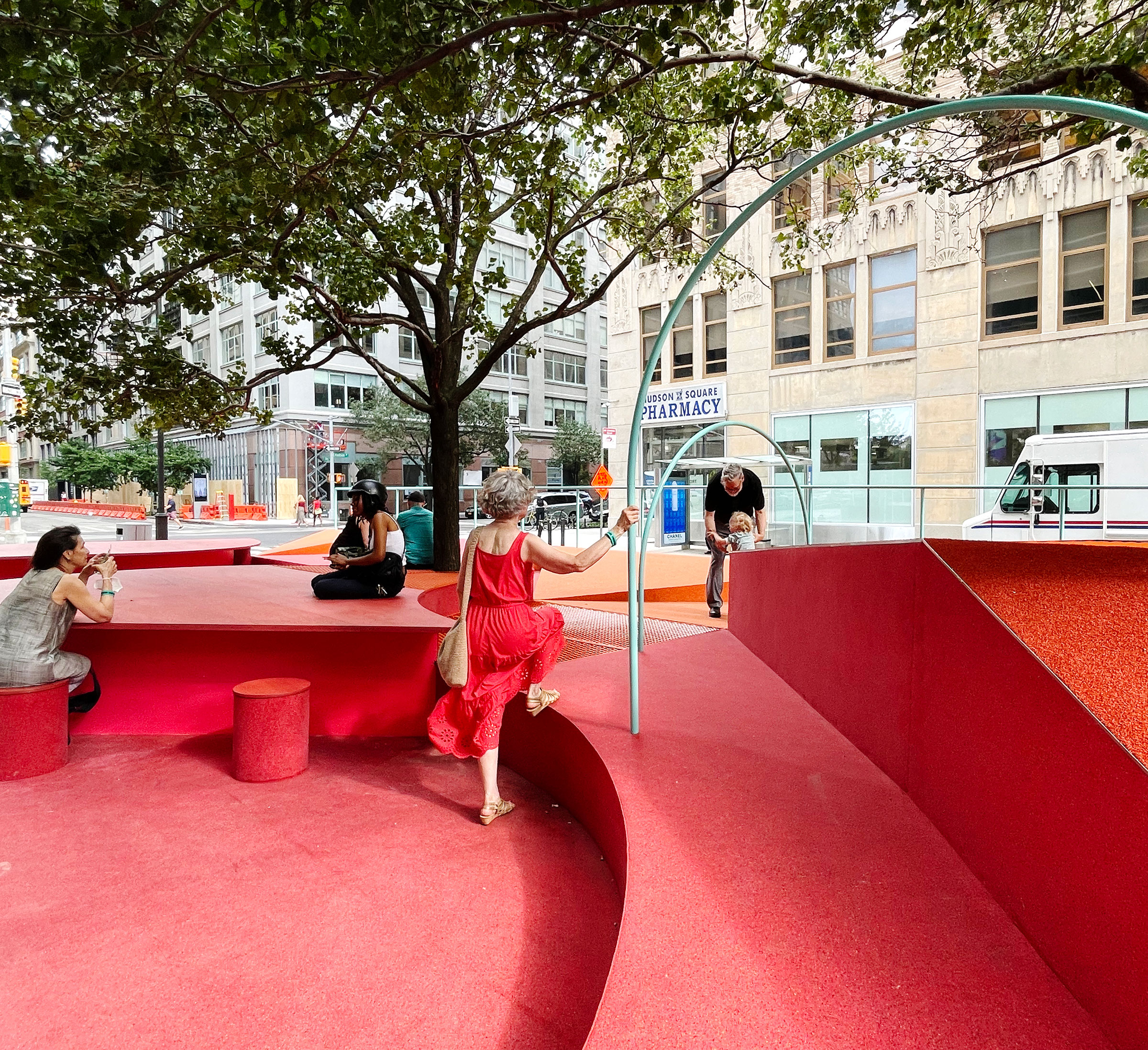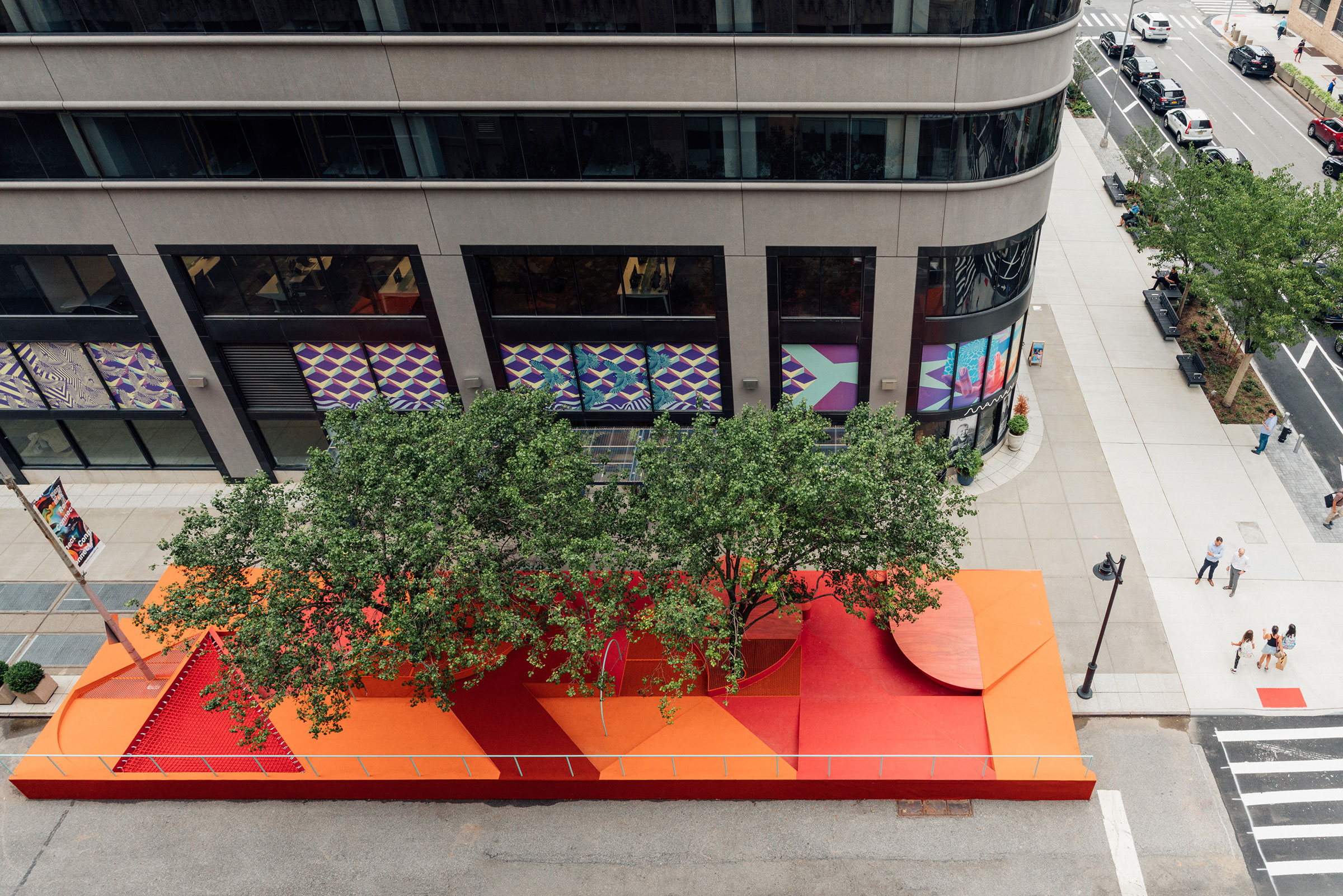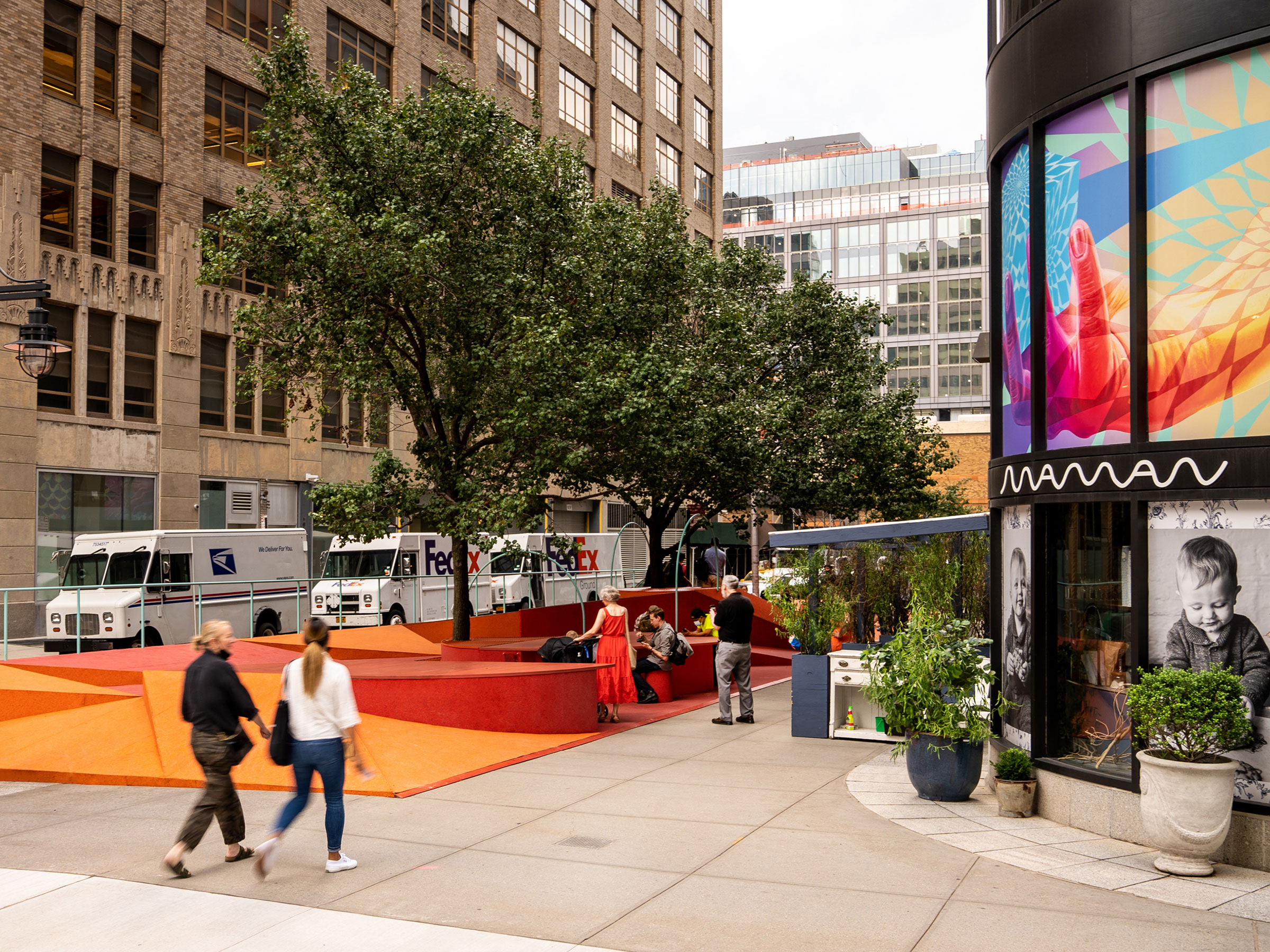At a moment when we are finding ways to gather again, Restorative Ground in Manhattan’s Hudson Square celebrates the diverse reasons people enjoy public space. Designed by WIP Collaborative, a New York-based feminist design platform that includes several Pratt Institute alumni and faculty members, it uses vibrant yet sturdy shapes of recycled rubber and AstroTurf to cover a wedge-shaped area with elevated features, seating, and objects for play.
“Restorative Ground provides freedom for each individual to choose their own experience based on how they feel, something that is often limited in conventional public spaces that prioritize specific uses, such as sitting or sports,” said Sonya Gimon, MS Sustainable Environmental Systems ’18. “For some, Restorative Ground may become part of their daily routine or a way to relax after a workday, for others it may be an adventurous and fun experience, while others can come here to read a book.”
The project was the winning proposal in Urban Design Forum’s Care for Hudson Square design competition launched in partnership with Hudson Square Properties and the Hudson Square Business Improvement District. The initiative was developed in response to the pandemic as a form of community recovery with the resulting installation encouraging locals and visitors alike to hang out, reflect, or let off some energy, contributing to a revitalized Lower Manhattan streetscape following months of isolation.

Care for Hudson Square: WIP Collaborative, a New York-based feminist design platform that includes several Pratt Institute faculty members and alumni, designed Restorative Ground, a public space welcoming to all. It was the winning proposal in Urban Design Forum’s Care for Hudson Square design competition. Photo courtesy WIP Collaborative. Read more on Pratt’s News page.
WIP Collaborative’s proposal was based on their ongoing research into playspaces for people of all ages and abilities. There are nets for lounging, bars to swing on, seats for conversation, and trees for shade, all set amid buoyant shades of orange and red.
“Prior to Restorative Ground, we had conducted a series of interviews with individuals, groups, and advocates of neurodiversity,” said Abigail Coover, adjunct associate professor of undergraduate architecture. “As a result of this research, we were able to assemble a constructed landscape of choice with a wide palette of experiences.”
Located on King Street between Hudson and Greenwich streets, the temporary installation is a place where many different people meet, from recreational visitors to the nearby Hudson River Park to residents of Greenwich Village and Lower Manhattan office workers. WIP’s research revealed that New York City was lacking in public spaces that support diverse users and as King Street is an area with plans for permanent improvements they could offer a vision for a more inclusive future.
“Throughout the interviews, we heard the importance and lack of joyful public spaces for certain age groups, such as teenagers, and sought to create a supportive and immersive streetscape for all ages,” said Sera Ghadaki, MArch ’18. “Because the entirety of the project happened during the pandemic, it was imperative for us to create an environment for collective safe interactions, healing, and joy.”

Restorative Ground at Hudson Square (courtesy Hudson Square Properties)
Although WIP Collaborative came together outside of Pratt, several of their members said that their time at the Institute has impacted how they design, especially in considering their context in a community and how they relate to the rest of the city.
“As an alumna of Sustainable Environmental Systems, my work resonates with the systems and multi-scale approach to change,” Gimon said. “While Restorative Ground is a single installation, it is part of a larger picture that we are pursuing with other projects that aim at introducing change to the system as a whole, on both site-specific design and policy levels.”
For Elsa Ponce, MPS Design Management ’17, collaborating with a team of people with complementary skills echoed her time as a Pratt student as the seven members of WIP all have independent design and architecture practices with their own focuses.
“WIP’s collaborative approach parallels my experience as a student in Design Management, a program where I worked alongside classmates from a variety of disciplines and backgrounds to solve complex problems through design,” Ponce said.
After staying in Hudson Square through the fall, Restorative Ground is planned to be installed elsewhere in New York, adapting its dynamic design to a new neighborhood and its needs. As people rethink how to gather, the project proposes a future where public space can be a place where everyone feels welcome.
